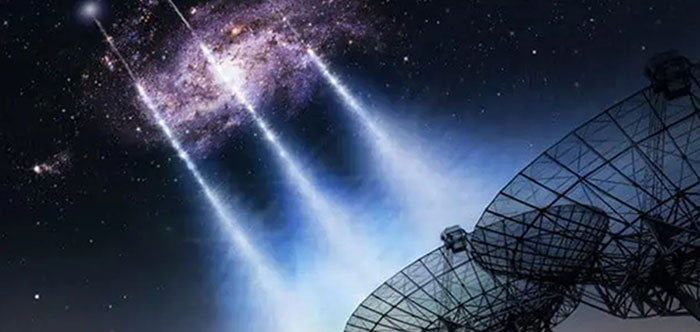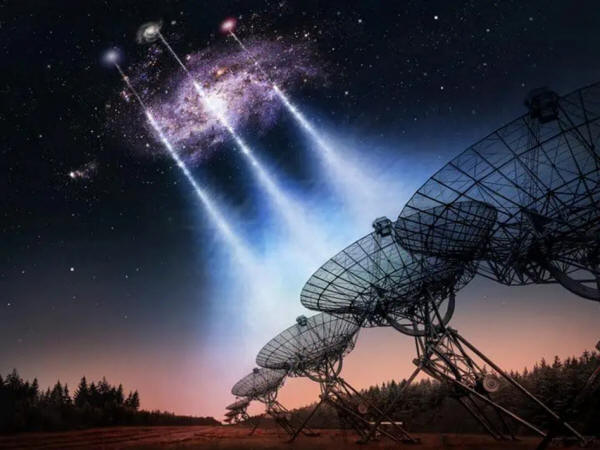|
12 April 2023
from
Astron Website
WSRT-APERTIF
The telescope images, much sharper than previously possible, revealed that multiple bursts had pierced our neighboring Triangulum Galaxy.
This allowed the
astronomers to determine the maximum number of otherwise invisible
atoms in this galaxy for the first time. The results will be
published on April 12th. Fast Radio Bursts, FRBs, are among the brightest explosions in the universe.
The bursts mainly emit radio waves. The flashes are so powerful that radio telescopes can detect them even from over four billion (!) light years away. That continued visibility over such vast distances means the bursts contain immense amounts of energy.
When it goes off, a
single FRB contains ten trillion (ten million times a million) times
the annual energy consumption of the entire world population.
The density and magnetic field strength of those extremely compact stars are unique in the universe. By investigating the flashes, astronomers aim to better understand the fundamental properties of the matter that makes up the universe.
But studying these flashes is difficult. No
one knows where in the sky the next burst will go off. And an FRB
lasts only a millisecond: if you blink, you will miss it.
It also immediately pinpointed them, says principal investigator Joeri van Leeuwen (ASTRON):
were shown to have pierced the halo of our neighboring Triangulum Galaxy. Invisible electrons in that galaxy deform the FRBs. From sharp, new, live images, astronomers could estimate the maximum number of invisible atoms in the Triangulum Galaxy for the first time.
(Credit: ASTRON/Futselaar/van Leeuwen)
Flies can see in all directions, but blurred. The Westerbork upgrade is like cross breeding the eyes of a fly with that of an eagle.
The ARTS supercomputer continuously combines the images from twelve Westerbork dishes to create a sharp picture over a massive field of view.
But the flashes are also interesting because on their way to Earth they pierce other galaxies. Electrons in those galaxies, normally mostly invisible, distort the flashes.
Tracking down invisible electrons, and their accompanying atoms, is important because most of the matter in the universe is dark and we still know little about it.
Previously, radio telescopes could only roughly indicate where an FRB occurred.
The ARTS supercomputer now enables Westerbork to indicate the exact location of an FRB very accurately.
Van Leeuwen:
|



